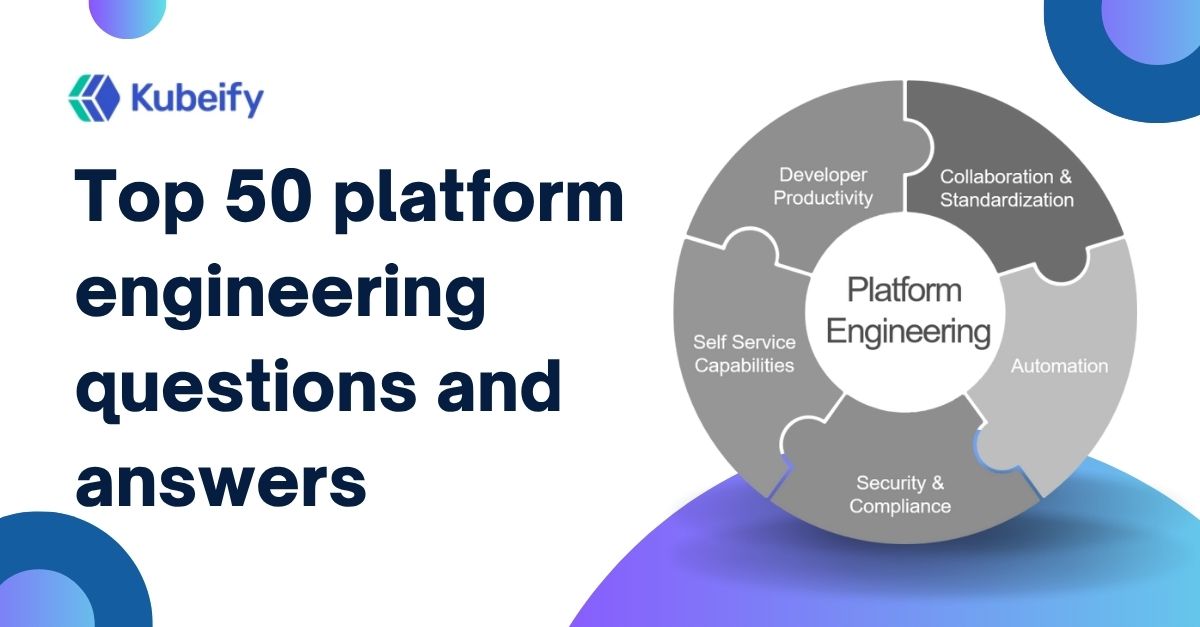AI Cloud
- Cloud Native Product Development
- Cloud Native FaaS
- Monolith to Microservices
- DevSecOps as a Service
- Kubernetes Zero Downtime

How do you design a scalable notification system for millions of users?
Implement distributed message queues (like Kafka or RabbitMQ), partition topics by user/region, place cache layers (Redis) for user state, and ensure horizontal scaling.
Example: An e-commerce platform uses Kafka to relay notifications, with worker services scaling up or down based on queue length, while Redis caches user-device mappings.
How do you implement a distributed logging system?
Use centralized logging (ELK stack or Fluentd), forward logs from all infra to a central location, index for searchability, and offer role-based dashboards.
Example: Kubernetes pods send logs to Fluentd, which then feeds Elasticsearch. Kibana dashboards visualize errors and trends.
How do you design a load balancer for large-scale web apps?
Deploy cloud-native load balancers (AWS ELB, GCP LB), configure health checks, support sticky sessions when required, and enable auto-scaling.
Example: A social app on AWS uses ELB to distribute incoming traffic across hundreds of EC2s, bypassing unhealthy nodes automatically.
How do you architect cloud systems for high availability?
Spread resources over multiple zones/regions, use managed failovers, and enable automated backup/replication.
Example: SaaS analytics runs critical services in US-East and US-West, utilizing RDS cross-region replication and S3 versioned backups.
What are best practices to ensure cloud scalability?
Favor stateless components, leverage load balancers, use distributed databases, decouple services, and integrate CI/CD pipelines.
Example: Netflix runs stateless microservices and uses auto-scaling behind load balancers to meet changing global demand.
How does database sharding support scalability?
Partition data (by user ID, geography, etc.) across independent shards to distribute load and enhance parallelism.
Example: Gaming platform shards user data by region, so each DB handles a subset of users, boosting performance.
How do you build a resilient microservices platform?
Integrate service mesh (Istio), redundancy, circuit breakers, and graceful degradation.
Example: If email service fails, requests queue until resolved without affecting other microservices.
What is a cloud service mesh and why use one?
A service mesh like Istio manages service-to-service traffic, offering secure, observable, and resilient comms via sidecar proxies.
Example: In Kubernetes, sidecar proxies in each pod auto-encrypt and log all internal traffic.
How do you optimize CI/CD pipelines for faster deployments?
Use parallel test execution, Docker layer caching, split pipelines per environment, and automate rollback strategies.
Example: Jenkins pipelines run parallel build/test jobs and cache Docker layers for changed code only, speeding up releases.
What’s your approach to Infrastructure as Code (IaC)?
Use code-based tools (Terraform, CloudFormation), version infra resources, peer review changes, and enable reproducible environments.
Example: Terraform scripts define all AWS resources in Git, so environments can be rebuilt or rolled back swiftly.
How do you monitor and respond to performance bottlenecks?
Deploy APM, distributed tracing, log aggregation, and alerts for critical metrics.
Example: High web response times traced to DB queries using Datadog and fixed by index improvements.
What’s the role of automation and DevOps in cloud management?
Automation ensures rapid, reliable, repeatable infra changes; DevOps unifies dev and ops via CI/CD, IaC, and real-time monitoring.
Example: Ansible scripts automate blue/green deploys, reducing manual errors.
How do you integrate CI/CD with cloud platforms?
Use cloud-native CI/CD tools (AWS CodePipeline), trigger builds from code pushes, test, and deploy automatically.
Example: GitHub merge triggers AWS CodePipeline, deploying updates to Lambda, with Slack alerts for status.
How do you ensure security in automated deployments?
Secure secrets with vaults, enforce least-privilege IAM, scan configs for vulnerabilities, and encrypt data in transit and at rest.
Example: Terraform pipelines use AWS Secrets Manager at deploy time and validate S3 bucket permissions.
How do you document platform designs and processes?
Maintain living docs (architecture, runbooks, automation steps) and automate change tracking.
Example: A Confluence wiki maps services, processes, and support steps for easy onboarding.
How do you maintain and update cloud infrastructure over time?
Scheduled patching, blue/green deployments, continuous monitoring, and automated capacity/usage audits.
Example: OS updates roll out in phases, updating half of servers while keeping the other half live.
How do you troubleshoot complex infrastructure issues?
Reproduce problem, gather logs/metrics, perform root-cause analysis, refer to runbooks, and document outcomes.
Example: Latency traced via network capture reveals DNS resolver failure, remediated by updating resolver settings.
Why is version control critical for cloud infrastructure?
It ensures traceability, enables rollbacks, promotes collaboration, and safeguards against accidental changes.
Example: Deleting a resource by mistake is fixed by reverting to a stable Terraform commit.
What is a Virtual Private Cloud (VPC)?
An isolated virtual network in the cloud, with subnets, security groups, and gateways.
Example: Marketplace splits VPC into public subnets (web) and private (DB), securing sensitive data.
What role does a load balancer play in cloud infra?
Distributes incoming requests, ensures uptime/failover, balances traffic using algorithms.
Example: Azure Load Balancer routes gaming traffic to least busy servers.
What is cloud elasticity and its benefit?
Auto-adjustment of resources to meet real-time demand, optimizing costs and performance.
Example: Food delivery platform adds/removes servers hourly based on dinner rush.
How do you ensure cloud network security?
Proper security groups, encryption, VPC peering policies, and centralized IAM.
Example: Healthcare app encrypts RDS at rest, tightens SGs, and requires MFA for access.
How do you implement disaster recovery in the cloud?
Regular DB snapshots, cross-region backups, automated failover, and frequent DR drills.
Example: Fintech regularly snapshots DB, copies to another region, and tests failover.
How do you troubleshoot network latency in cloud environments?
Analyze metrics, trace traffic paths, test multi-region, optimize network routes.
Example: Ecommerce checkout delay fixed by switching to more direct cross-region routing.
How do you ensure high availability for apps in the cloud?
Deploy in multiple zones/regions, maintain redundancy, continuous health checks, auto failover.
Example: News site runs in several AWS regions; DNS auto-redirects users on region failure.
What is Infrastructure as Code (IaC) and why is it important?
IaC manages infra with code, allowing automation, consistency, rollback, and collaboration.
Example: Terraform provisions identical staging and production environments from a single file.
What does cloud resiliency mean?
Systems withstand/recover from failures using redundancy, auto-healing, and regular tested backups.
Example: Automatic DB failover points traffic to replica instantly if primary fails.
How do you right-size infra for cost savings?
Monitor usage, adjust resources, leverage reserved/spot instances, automate off-hours shutdowns.
Example: Analytics app scales down half its VMs at night, reducing cloud spend.
What are key cloud cost optimization strategies?
Use auto-scaling, spot instances, remove unused resources, and keep close tabs on utilization.
Example: Non-prod environments deleted after test completion, lowering storage and compute costs.
How are database replication and sharding leveraged for scale?
Replication ensures high availability, sharding partitions data for scalability.
Example: Messaging app replicates for uptime, shards by user for performance.
How do CDNs help with scalability and performance?
CDNs cache content near users at edge locations, improving latency and offloading origin servers.
Example: Video platform delivers streams from global CDN nodes.
Which languages and tools are key for platform engineering automation?
Python, Go, Bash for scripting; Terraform, Ansible for infra; Docker, Kubernetes for containers.
Example: Automated build pipelines use Python; deployments with Docker Compose; cluster management via Helm.
Describe a time you resolved a critical production incident.
Detect via logs, roll back quickly, trace root cause, patch, and redeploy.
Example: API deployment caused errors, team rolled back, patched issue, and redeployed a fixed version.
How do you prioritize multiple urgent tasks?
Assess business impact, communicate, delegate, and use sprints for workflow management.
Example: Team triages bugs, addresses highest-impact issues first, and tracks others in backlog for future sprints.
What’s your onboarding process for new tools/services?
Pilot project, POC, gradual rollout, and solid documentation.
Example: New CI tool piloted with one team, feedback recorded, documentation written, then rolled out to others.
How do you collaborate with development teams?
Joint planning, shared docs, feedback loops, and cross-team communication.
Example: Weekly syncs between platform and app teams for integration planning and troubleshooting.
How do you maintain platform documentation and training?
Maintain wikis, runbooks, code examples, live demos, and interactive onboarding.
Example: New hires complete a hands-on onboarding course simulating common platform tasks.
Why is observability critical in cloud platforms?
Enables fast detection and resolution of issues, insight into usage, and system optimization.
Example: API outages caught instantly by synthetic monitoring, auto-remediation scripts are triggered.
How do you plan and execute a cloud migration?
Assess/appraise workloads, design migration, test, execute, validate, optimize post-move.
Example: Retail site migrates dev to AWS, validates, then shifts production workloads.
What are red flags in platform engineering job candidates?
Weak problem-solving, limited hands-on work, poor communication, or resistance to new technology.
Example: Candidate can’t explain previous cloud projects or demo infra understanding.
How do you stay current with cloud and platform engineering trends?
Attend conferences, follow tech leaders, read blogs, review docs, and pursue certifications.
Example: Monthly learning goals set, attend AWS summits, subscribe to Kubernetes changelogs, pursue GCP certifications.

Kubeify's team decrease the time it takes to adopt open source technology while enabling consistent application environments across deployments... letting our developers focus on application code while improving speed and quality of our releases.
– Yaron Oren, Founder Maverick.ai (acquired by OutboundWorks)
Let us know what you are working on?
We would help you to build a
fault tolerant, secure and scalable system over kubernetes.
